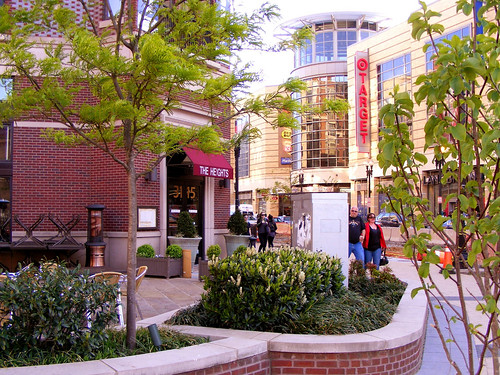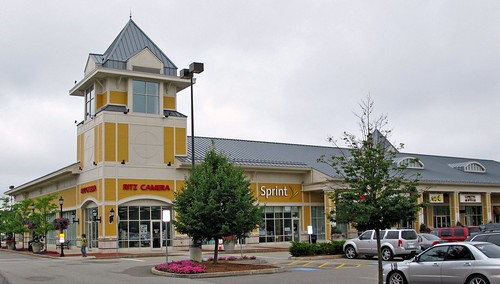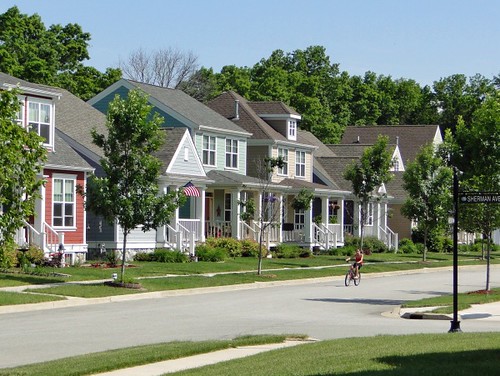Sustainable communities must embrace the familiar

Posted September 26, 2011 at 1:30PM
I believe that, if sustainable communities are to become mainstream, as they must, they must provide potential residents, workers, and visitors with as much familiarity – in buildings, in design, in components, in comfort – as possible. The path to a more environmentally benign future lies not in convincing consumers that they must change, but in giving them the things they seek in a more sustainable form.
This isn’t just opinion, though I have long accepted it as such: it’s now also science. In a group of studies reported together in the August 15, 2011 Journal of Personality and Social Psychology, several researchers in multiple universities, led by Shigehiro Oishi of the University of Virgina, examined the reasons why the commercial landscape of American suburbia looks so much the same from place to place. A significant reason, they conclude, is that our transience as a society leads people to seek the familiar:
“[R]esidential mobility, the very factor that allows Americans to pursue their individual desires, ironically facilitates the uniformity of American landscapes.
This is because a move to a ‘strange land’ evokes the desire for familiar objects, including national chain stores (i.e., retail stores having the same ownership and selling the same products in multiple locations nationwide). Although starting a new life in a new city is exciting, a residential move also causes a significant amount of stress and anxiety . . . When individuals move to a strange place and are under the stress of starting a new life and have to repeat this again and again, they are likely to seek out familiar objects and avoid unfamiliar objects.” [Citations omitted.]
Fifty percent of Americans are likely to move in a five-year period, with long-distance moves occurring much more frequently than in other industrialized countries, say the researchers.
Oishi’s team also found that, the more frequently an individual moves, the more likely she is to prefer “familiar stores (national chain stores) over unfamiliar stores (local stores in an unfamiliar place).” (Intriguingly, they also found that frequent movers were more likely to be politically liberal on economic issues and conservative on social issues than those who move less.) Likewise, the more a community consists of frequent movers, the more chain stores it is likely to have. The authors certainly allow that many other factors contribute to sprawl and the predominance of national chains among American retailers, but conclude that the tendency of mobile Americans to seek the familiar is nonetheless a significant contributing factor.
In commenting on this study in The Washington Post, Roger Lewis suggests that one reason that more affluent neighborhoods with stable populations in the DC area have fewer chain stores could be their relatively lower numbers of transients. This certainly seems consistent with the research findings, though Lewis acknowledges that other factors are also at work. A corollary to Lewis’s suggestion might be that, in stable neighborhoods, locally-based retailers have more of a chance over time to become familiar to us.
While the implications of the Oishi team’s research may be unsettling – oh, great, chain stores! – to many environmentalists and urbanists,  including myself, I think we may serve our cause better by working with the findings rather than against them. We must continue to find ways to integrate national retailers into more sustainable places.
including myself, I think we may serve our cause better by working with the findings rather than against them. We must continue to find ways to integrate national retailers into more sustainable places.
My friend Ed McMahon, with the Urban Land Institute, would likely agree. Several years ago, McMahon wrote Better Models for Commercial Development: Ideas for Improving the Design and Siting of Chain Stores and Franchises, published by the Conservation Foundation (McMahon’s employer at the time) in cooperation with the Smart Growth Network and the Planning Commissioners Journal. He believes that we can frequently have it both ways – the familiar chains, in better forms more suited to local character and more walkable placement – but that communities must insist upon it:
“National franchises and chain stores can and do change their standard building design to ‘fit in’ with the local character of the surrounding community. But they only do this in communities savvy enough to insist on something better than off-the-shelf, ‘cookie cutter’ architecture.”
The need to incorporate the familiar into development, including suburbs, in more sustainable ways has implications for residential development as well as commercial. New urbanist leader and champion of traditional (he would say neo-traditional) architecture Andres Duany has put it this way:
“It is through the steady reputation of traditional architecture that we enlist the middle class to our cause, which is to have them inhabit again a walkable, compact, and diverse urbanism.”
Now, not even all new urbanists agree, and some communities and consumers are more enthusiastic about nontraditional design than others. In any event, what is traditional in one place isn’t traditional in another.
But there is definitely something to it. Personally, I am largely agnostic on the issue of stylistic preference, but Duany’s assertion that working with familiar styles helps sell the agenda of walkable communities rings true for me. Look at almost any sprawl development: chances are you will see very familiar architecture, because it is in developers’ interests to offer products that their customers seek.
If sustainability is to attain a scale comparable to that of sprawl, it must offer these familiar styles and components, but in better forms. Does this mean that every neighborhood aspiring to be sustainable must include chain stores and cookie-cutter traditional housing styles? Absolutely not, especially in intensively urban settings. But it does mean that many of them must. We must meet the market where it is in order to succeed.
Move your cursor over the images for credit information.


